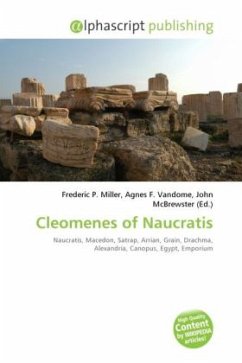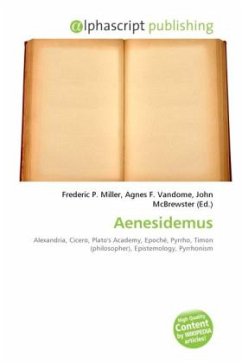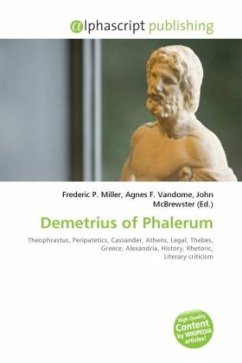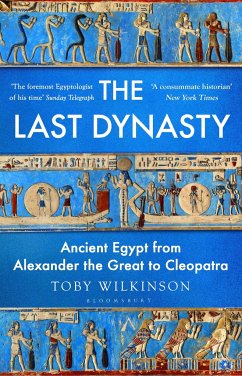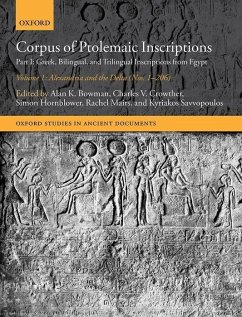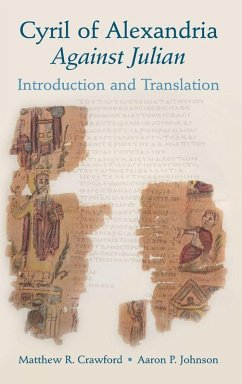
George of Laodicea
Versandkostenfrei!
Versandfertig in 6-10 Tagen
26,99 €
inkl. MwSt.

PAYBACK Punkte
13 °P sammeln!
Please note that the content of this book primarily consists of articles available from Wikipedia or other free sources online.George of Laodicea, (b. about the beginning of the 4th century), often called the Cappadocian, was from 356 to 361 Arian archbishop of Alexandria. According to Ammianus, he was a native of Epiphania, in Cilicia. Gregory Nazianzen tells us that his father was a fuller, and that he himself soon became notorious as a parasite of so mean a type that he would sell himself for a cake. After many wanderings, in the course of which he seems to have amassed a considerable fortu...
Please note that the content of this book primarily consists of articles available from Wikipedia or other free sources online.George of Laodicea, (b. about the beginning of the 4th century), often called the Cappadocian, was from 356 to 361 Arian archbishop of Alexandria. According to Ammianus, he was a native of Epiphania, in Cilicia. Gregory Nazianzen tells us that his father was a fuller, and that he himself soon became notorious as a parasite of so mean a type that he would sell himself for a cake. After many wanderings, in the course of which he seems to have amassed a considerable fortune, first as an army-contractor and then as a receiver of taxes, he ultimately reached Alexandria. It is not known how or when he obtained ecclesiastical orders; but, after Athanasius had been banished in 356, George was promoted by the influence of the then prevalent Arian faction to the vacant see. His theological attitude was that known as semi-Arian (or homoiousian), and his associates were Eustathius of Sebaste and Basil of Ancyra. At George''s instigation the second Sirmian formula (promulgated by the third Council of Sirmium in 357), which was conciliatory towards strict Arianism, was opposed at the Second Synod of Ancyra in 358.



